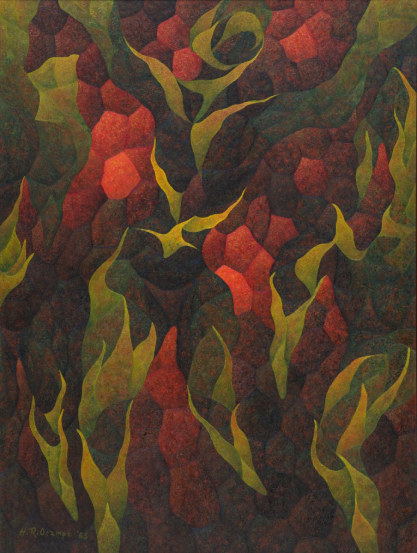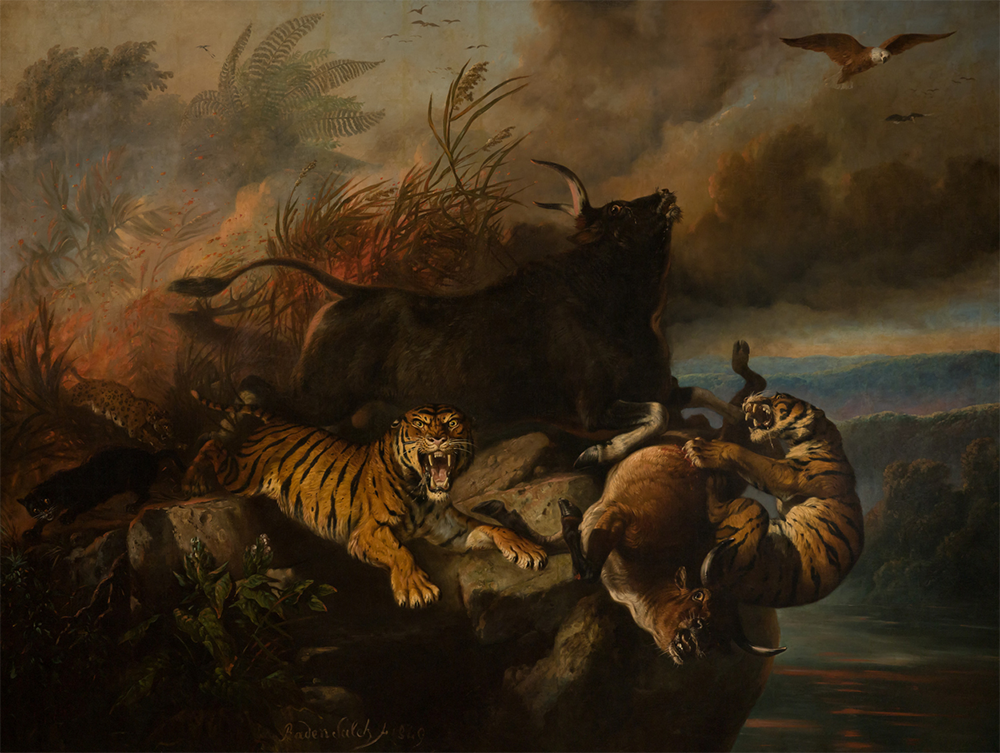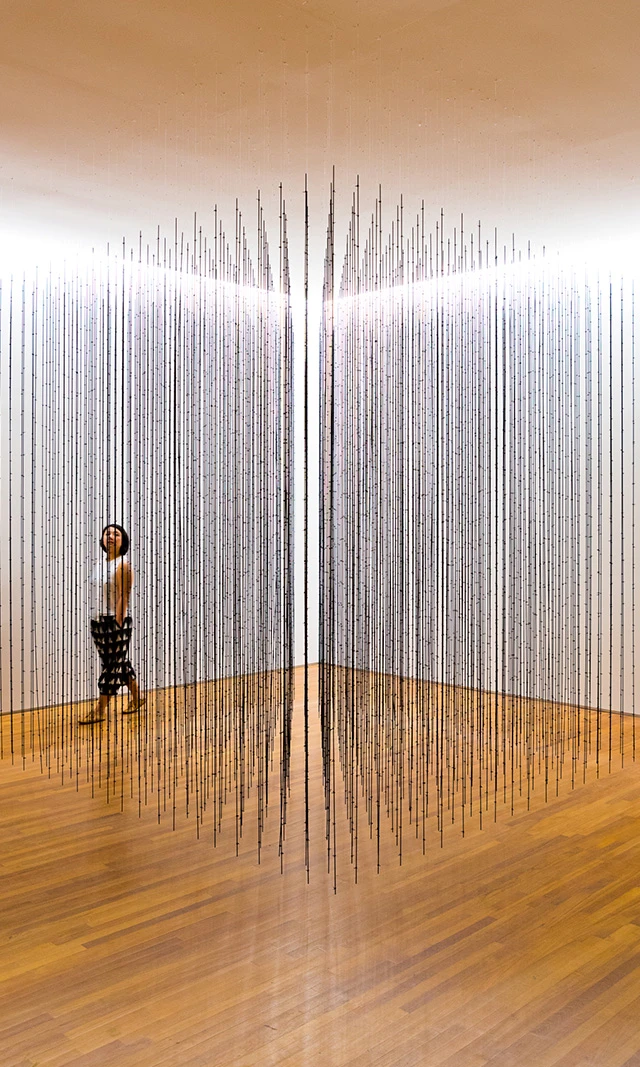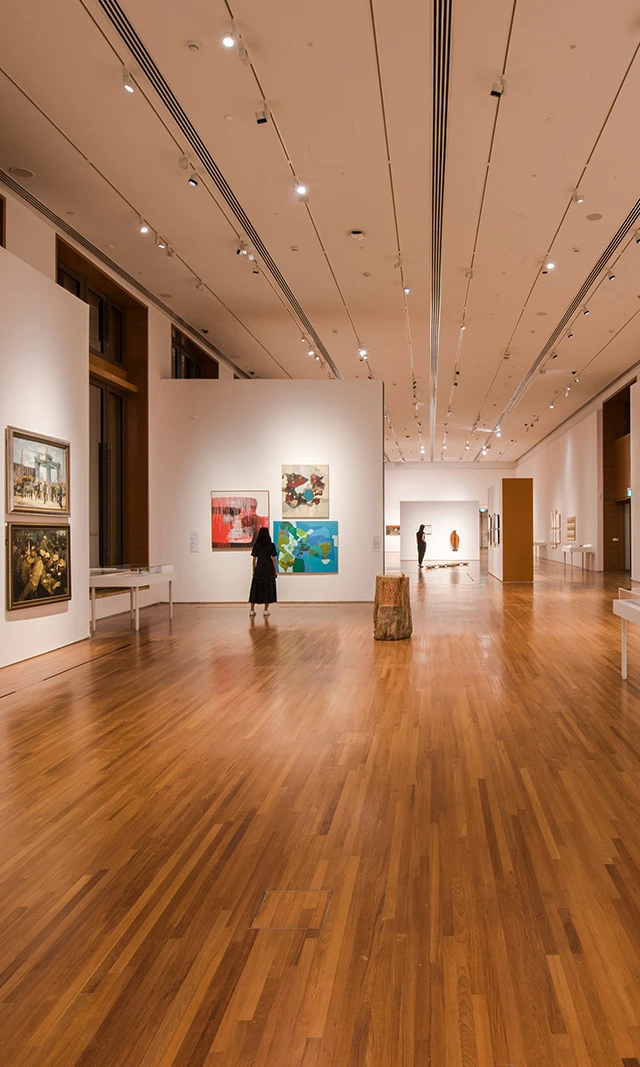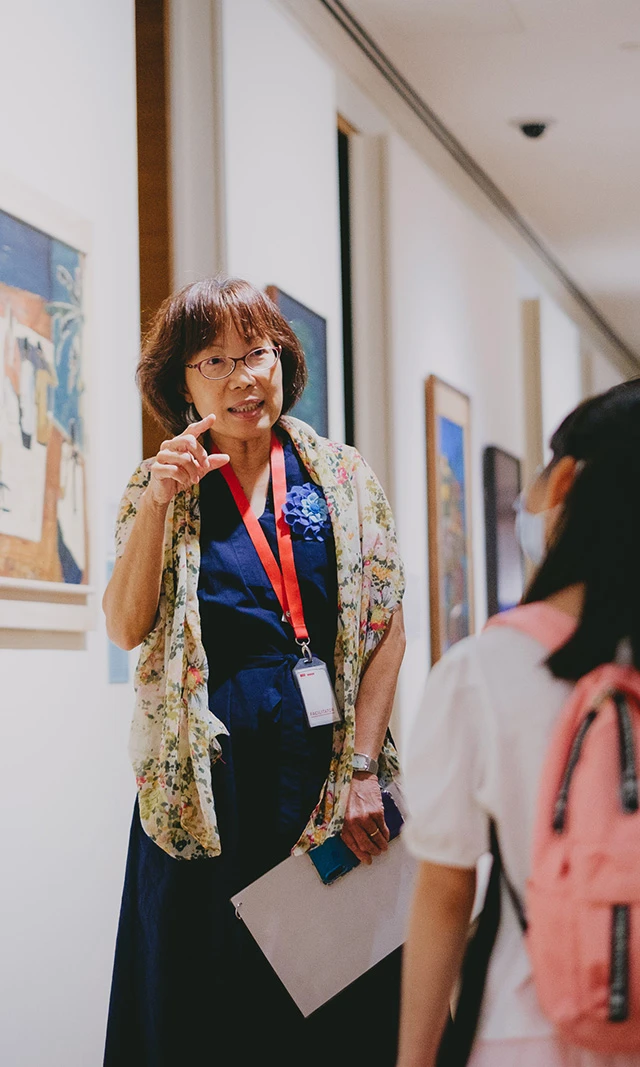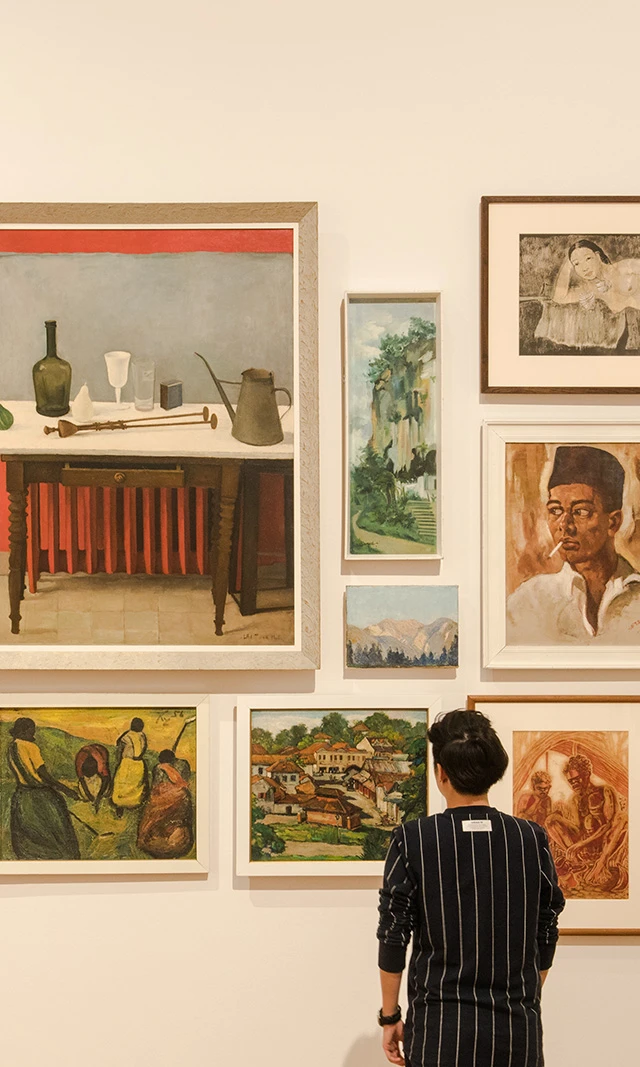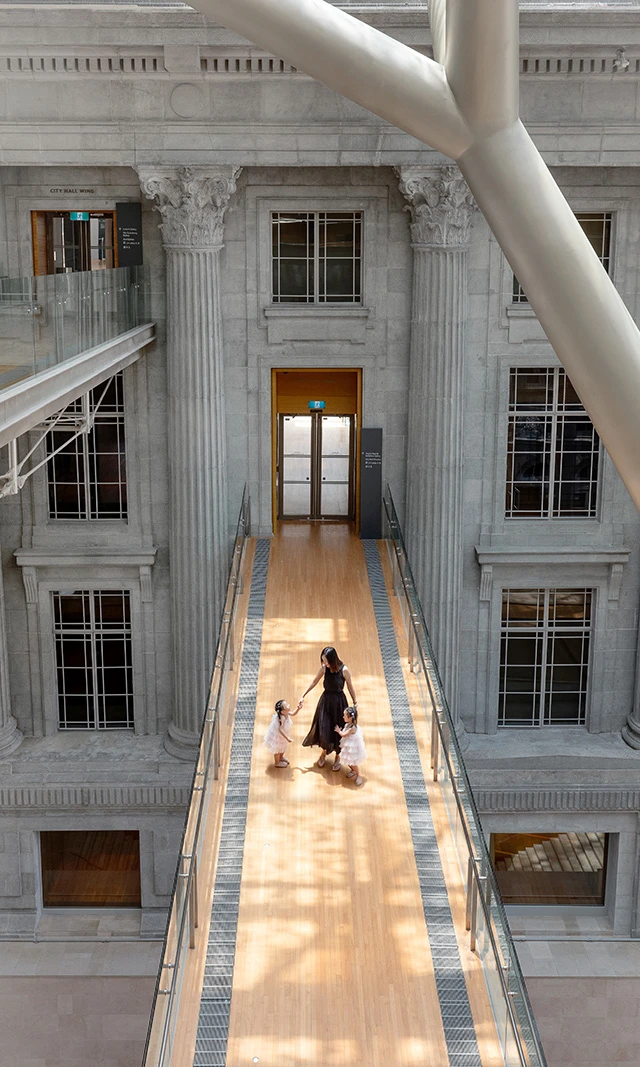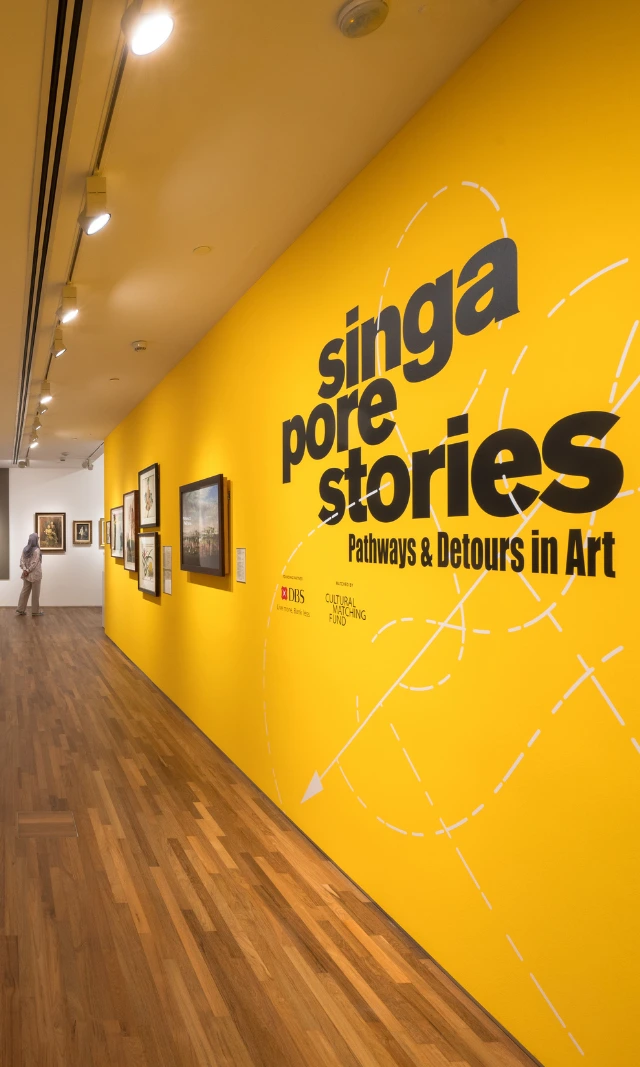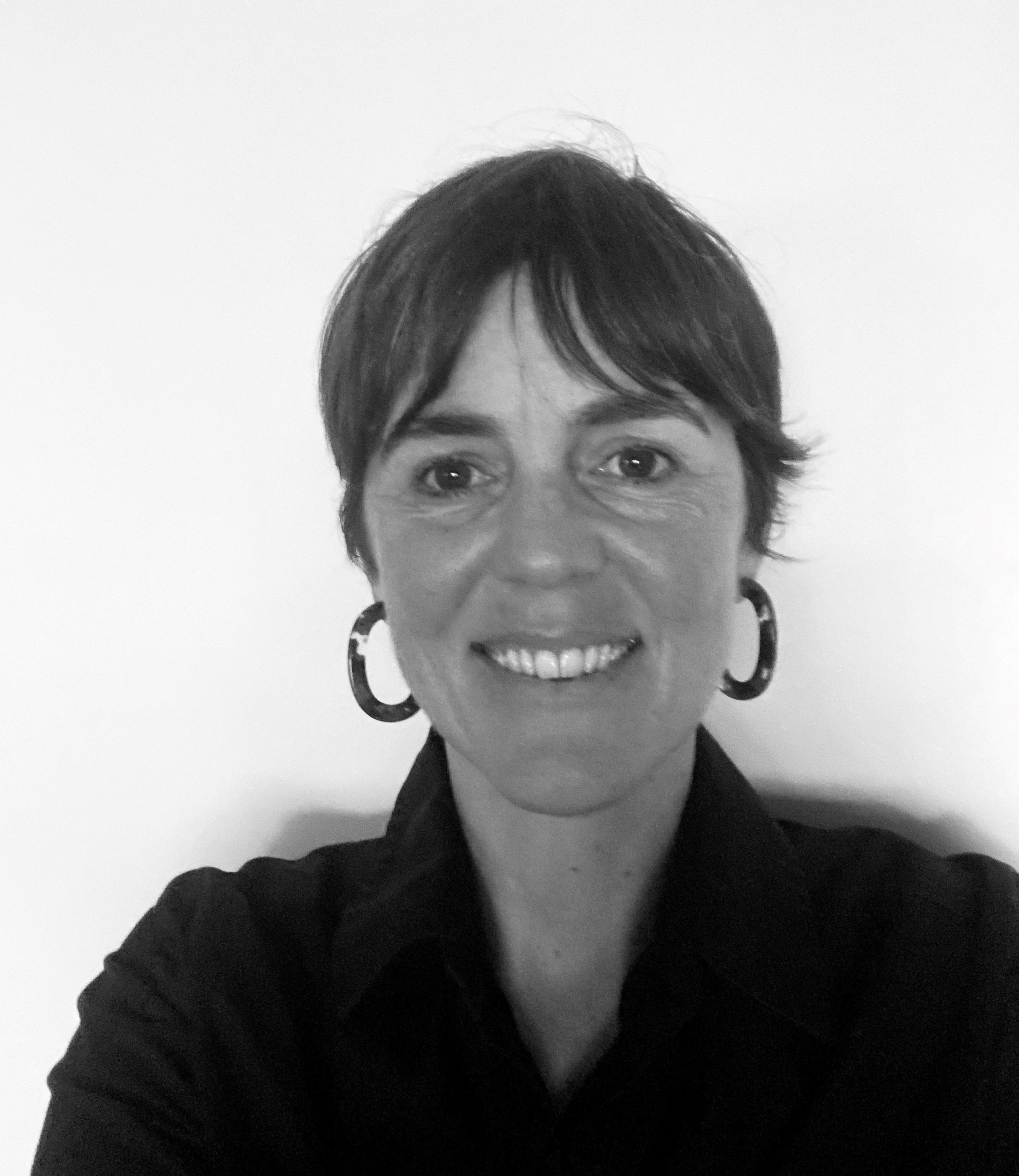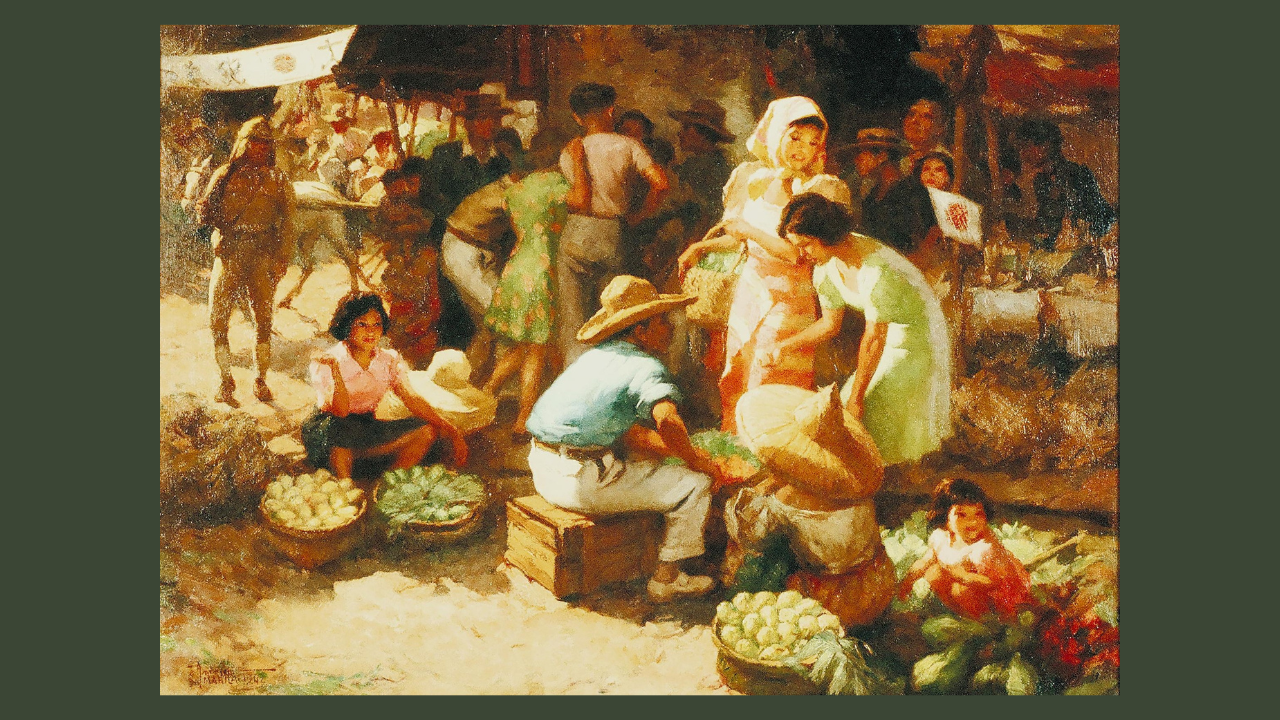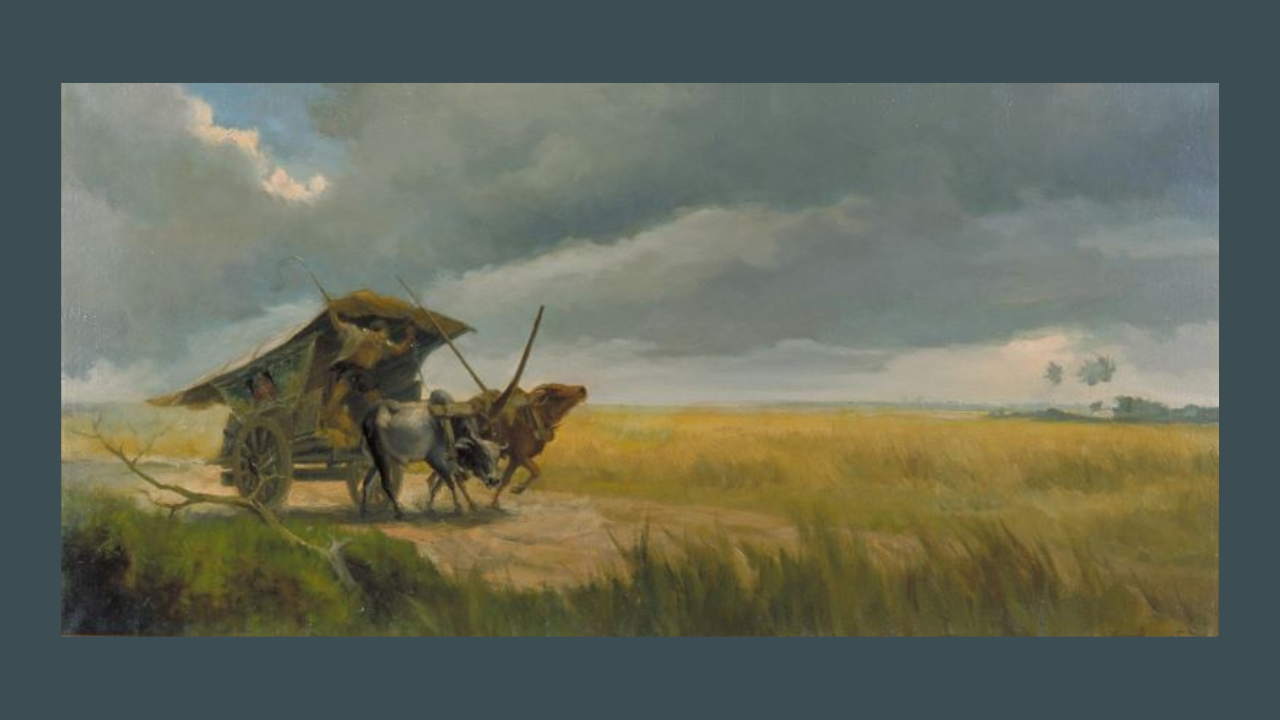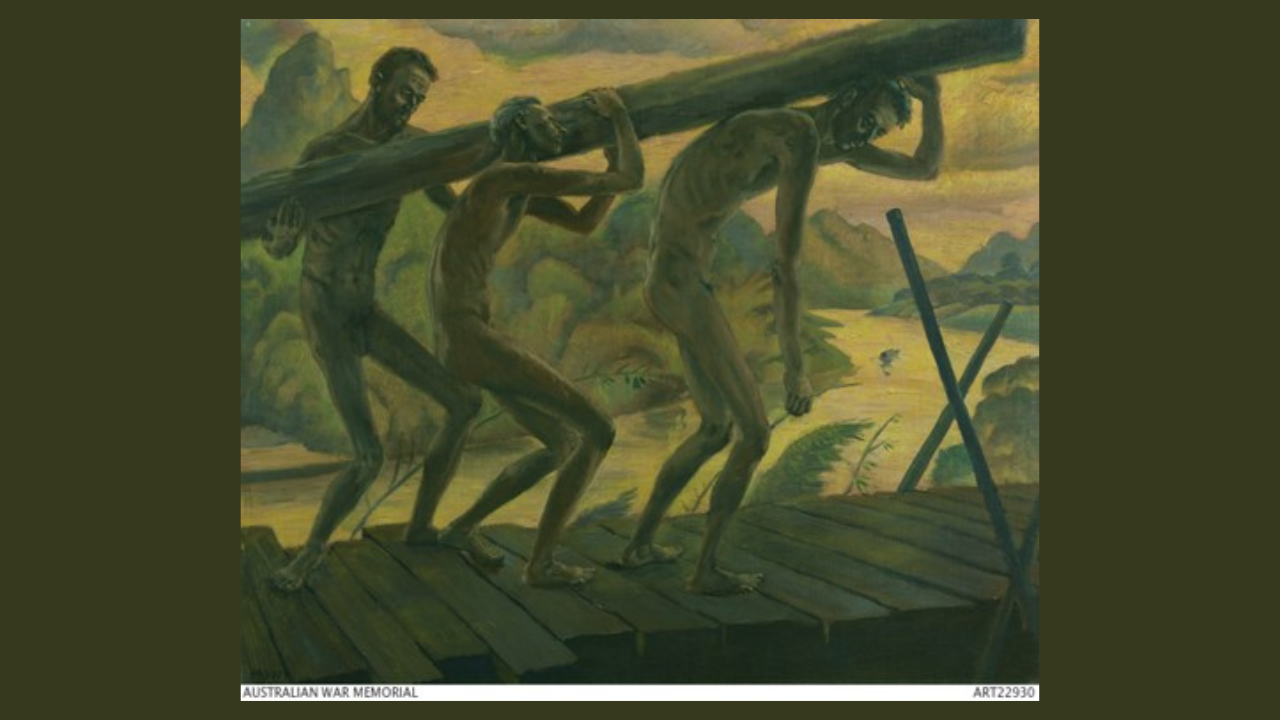Art x War: Maria Madeira and Koperativa LO’UD: Women’s Stories from Timor-Leste at the Australian War Memorial
Curator Elise Routledge from AWM discusses the institution’s acquisition of works by artists from Timor-Leste. Routledge describes the genesis and significance of works by the women’s weaving collective Koperativa LO’UD (LO’UD Cooperative) and contemporary artist Maria Madeira, who recently represented Timor-Leste at the Venice Biennale.

The experience of women and girls in Timor-Leste is a primary concern for artist Maria Madeira. Born in East Timor,1 Madeira was evacuated with her family to Portugal in 1976 following the Indonesian invasion. She lived in a refugee camp outside Lisbon before migrating to Australia in 1983. In Portugal, Madeira sang in an East Timorese community choir, absorbing and sharing her culture through song and voice. In Australia, she participated in the global solidarity movement with East Timor, joining with peace activists, Australian Army veterans, church leaders and social justice organisations to raise awareness of the plight of East Timorese people, using visual art to communicate her concerns. Her sculptural installation 270+ The Santa Cruz Massacre (1996) is an early example. Displayed at the Perth Institute of Contemporary Arts in 1996, the work memorialised the young victims of the Santa Cruz massacre, acknowledging their leadership in a symbolic display of revered kaibauk headdresses.2 This global movement in solidarity with East Timor is credited with laying the groundwork for independence, and raising enough interest to influence Australia and other nations’ decisions to deploy peacekeepers to the country.3 Australia’s official history of peacekeeping operations in East Timor says that
“...while circumstances conspired in 1998–99 to provide an opportunity for the East Timorese to have their political voice heard, the independence movement was only poised to take advantage of this moment because of the preceding 25 years of work by the solidarity movement ... This foundation of support, constructed over an extended period when East Timor was widely regarded as a lost cause, helps explain the strength and resilience of international interest in the dramatic months of 1999.”
Following East Timor’s vote for independence from Indonesia on 30 August 1999, Indonesian forces inflicted a campaign of violence and gross human rights abuses against the civilian population that included the rape and sexual slavery of women and girls.4 On 20 September 1999, the Australian-led International Force East Timor (INTERFET) was deployed to restore peace and security, support UN personnel already in the country and facilitate humanitarian assistance operations. INTERFET was Australia’s single largest deployment of military personnel following the Second World War and is still the country’s most-well known peacekeeping mission.
Women and girls face particular vulnerabilities during war and conflict. Australia’s National Action Plan on Women, Peace and Security states that in “conflict-affected contexts, women and girls are disproportionately affected—experiencing unequal access to food, healthcare, education, and justice, and often experiencing sexual and gender-based violence.”5 Yet, their stories are often missing from official records and national discourse. The Australian War Memorial recently acquired an artwork by Maria Madeira and a commissioned body of work by Koperativa LO’UD, a womens textile collective in Timor-Leste. These artworks share how women experienced conflict in East Timor and contributed to the nation's journey to independence and stability, supported by Australian peacekeepers from 1999 to 2013.6
The Australian War Memorial is developing new exhibitions dedicated to the history of Australian peacekeeping, including a large display about Timor-Leste. Art will play an important role in these displays in sharing the lived experience of those most impacted by conflict and peacekeeping. The Memorial cares for over 40,000 artworks related to wars and peacekeeping operations in which Australians have participated. The art collection related to Timor-Leste consists mostly of works by official, civilian war artists who observed and documented the work of the Australian Defence Force and the civilian populations they engaged with.7 As part of the research undertaken for new exhibitions, the Memorial’s art curators looked for opportunities to diversify and expand the art collection to include new perspectives of those most impacted by Australian operations in East Timor. In this case, artworks by civilians with lived experience of the conflict, artworks by East Timorese Australians, and artworks sharing women’s stories were identified as key areas for collection development.
In particular, the curators identified Maria Madeira, and Kooperativa LO’UD (LO’UD Cooperative), a women’s weaving collective based in Timor-Leste, as artists whose work could fill narrative gaps in the collection. The acquired and commissioned artworks provide opportunities to learn about female clandestine operators, how rape was used against women and girls, and the significant contribution of women to the independence movement. These stories, previously untold in the art collection at the Memorial and not widely understood or documented elsewhere, are now an integral part of the national record, offering nuanced and empathetic interpretations of the occupation of East Timor and the context for Australian peacekeeping operations.
Maria Madeira travels to Timor-Leste frequently to visit family and support reconstruction efforts. On one of these visits, while working with the UN in 2004, she stayed in a home with traces of lipstick left on the internal walls, left behind by women who had been held in the house and raped by Indonesian militia.

This experience had a strong impact on the artist and she made a number of works in response. Kiss and Don’t Tell (2024) featured in the inaugural Timor-Leste Pavilion at the 2024 Venice Biennale, and Women's Resistance (Rezistensia Feto)(2019), a textile artwork, was acquired by the Memorial in 2022. The latter is made up of layers of textiles: tais, a traditional cloth woven by women, which became symbolic of the resistance movement, is sewn together with Australian camouflage fabric, referencing the support and protection that Australian peacekeepers gave to the people of Timor- Leste. Sewn on top are pieces of cotton gauze that each feature a lipstick stain, left by the artist. The kisses were performed with an open mouth, creating a visual chorus of women’s voices speaking up, shouting or singing together. The violent traces of lipstick that Madeira witnessed are transformed into a chorus of hope and power, expressing the artist’s concern that women in Timor-Leste are empowered to speak about their suffering and endurance in a patriarchal society where “it [is] not deemed appropriate for a woman to express any view or opinion in public.”8 Instead, Madeira says that her work “talks about how strong the women were and how their fight, resilience, survival and triumph led to the freedom of our mother land.”9
Likewise, the body of work commissioned from Koperativa LO’UD in 2021, and expertly delivered by Melbourne-based non-government organisation, East Timor Women Australia (ETWA), reflects on the significant but under-recognised role that women played in the independence movement.
LO’UD is a cooperative of about 80 women from three weaving groups in the south-east of Timor-Leste. This rural area had strong ties to the resistance movement and was devastated by Indonesian militia after the vote for independence. The tais they weave are intrinsic to the cultural and economic life of the country and became a potent symbol of strength in the resistance movement.
Tais weaving is an enduring intergenerational women’s cultural practice that embodies ancient spiritual practices and expresses the strength of identity that was critical in uniting the people of East Timor to fight for independence. According to ETWA, “Tais share an important link with the nation’s journey of independence.”10 Traditional cultural practices were often suppressed by Indonesia during occupation, so weaving and wearing tais were acts of defiance that kept the spirit of resistance alive.
LO’UD has its origins in the resistance movement going back to the beginning of the occupation. It was initiated by Balbina da Conceição, who joined the resistance as a teenager in the 1970s. Balbina was an active participant in clandestine operations, working in a support cell of three women delivering information and supplies to members of the military wing of the Fretilin party, Falantil, as it hid in remote mountains. Balbina suffered many losses during the resistance. One of the members of her cell was killed after being violently tortured by the Indonesian military and Balbina’s husband died as a combatant. When she was away in the jungle conducting resistance activities, Balbina’s mother also passed away. Her aunt wove a tais from her mother’s cotton and gave it to her for comfort. Balbina drew strength from her maternal lineage embodied in its threads, wrapping herself in the tais when she slept outside at night to feel connected with her family.
After accepting the Commission for the Memorial, members of LO’UD came together to design and produce tais in smaller community-based groups. The resulting four tais represent cultural practices and values that are intrinsic to society in Timor-Leste. Fetosa’an umane: community connectedness and strength through marriage lo’ut: collaborative action: fulidai-dai: reciprocity; lulik: the spiritual cosmology governing relationships between people and nature; tara-bandu: restorative justice.
The tais are made in a style traditionally worn during marriage ceremonies and feature ancient symbols passed down from ancestors whose spirits protect their descendants. The prominent symbols framed by bands of bright colour relate to acts of cooperation and reciprocity between families and the natural world. For example, the tais nunukala (underskirt) features isir (ikat) symbols called suta-kawaili. These concentric diamonds surrounded by black curls on a brown background symbolise the kawaili gecko that lives in harmony with Timorese families. The suta-kawaili refers to the communication that is established between families through marriage. A bride is warned of impending danger if a kawaili (gecko) calls out three times. The same tais also includes black diamond-shaped alaniuhk symbols with short outward facing lines that symbolise spiky plants from Iliomar, signifying the connection between tais, cultural life and the earth, and calling on the groom’s family to protect the bride from danger. The symbols present in the tais represent core values upheld by women across East Timor during the resistance, such as careful listening, knowing the land, cooperation, and being alert to danger, qualities that are immeasurably useful in the face of danger and guerrilla warfare.
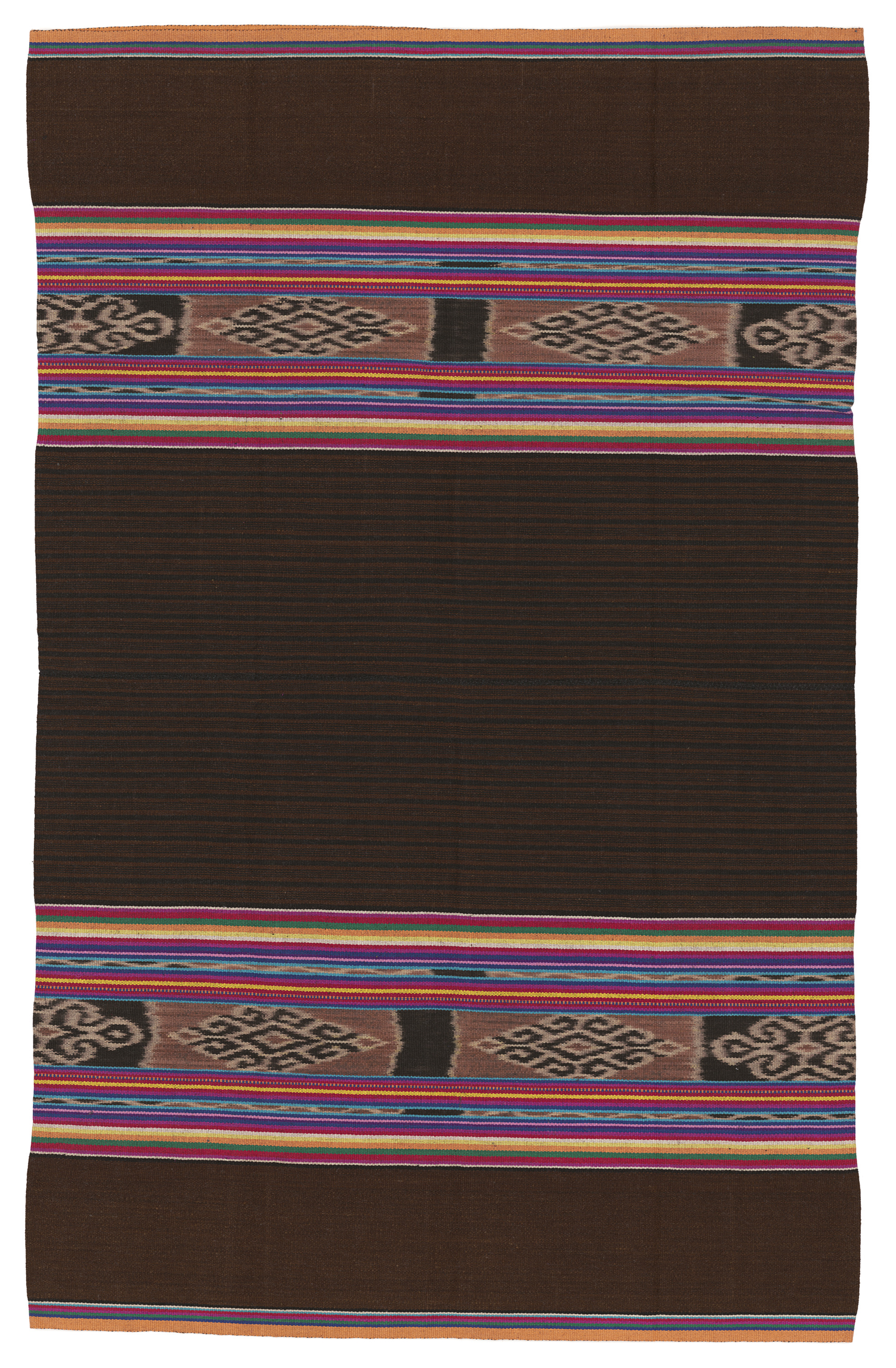
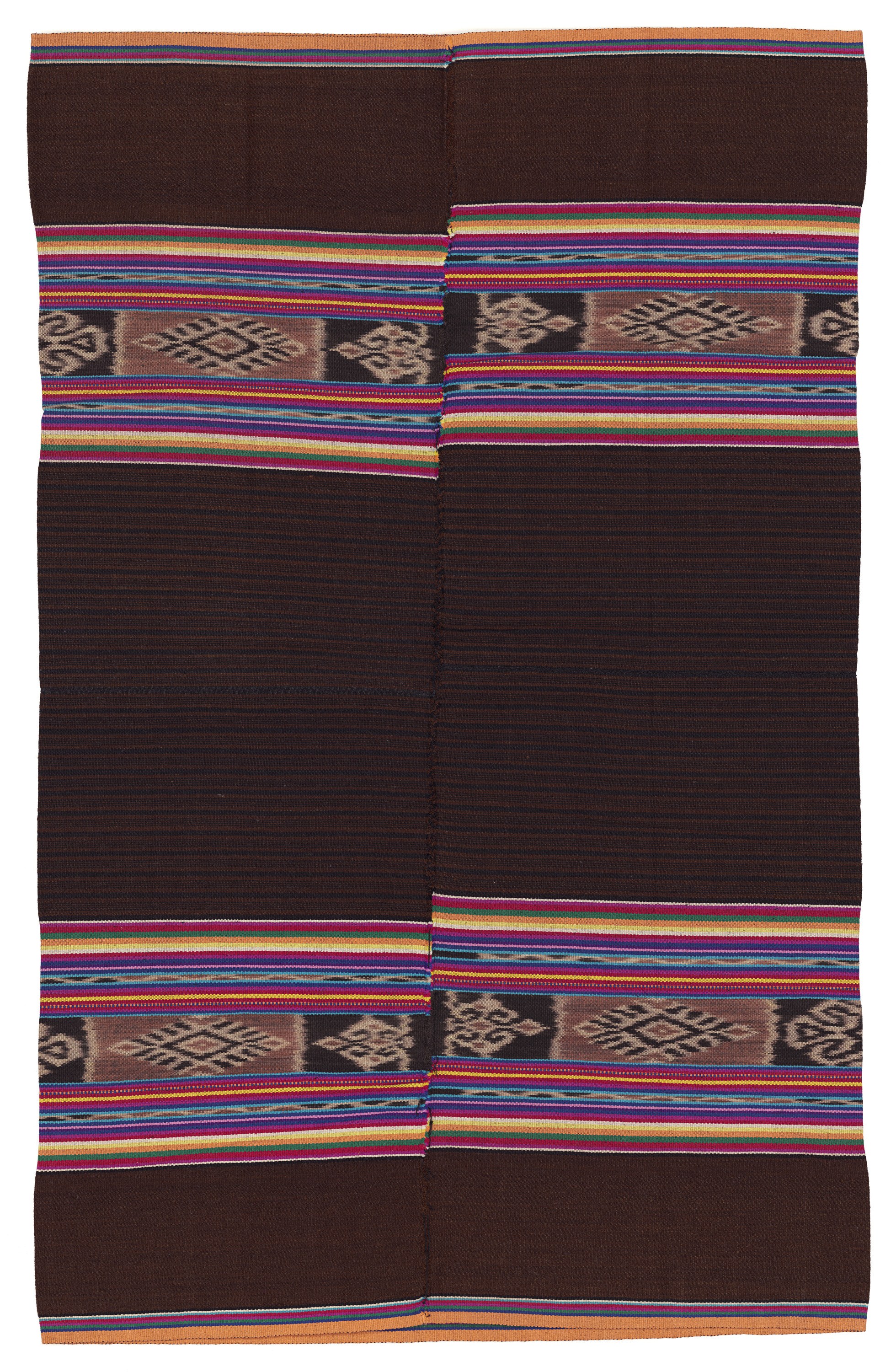
Ilda da Cruz, speaking on behalf of LO’UD Cooperative, said:
Although the Tais are from Iliomar, they represent the struggles of our sisters, aunties, mothers and grandmothers across Timor-Leste; the brave women who fought for our cultural identity during the resistance, worked hard to build peace and reconciliation in our independent nation and continue the struggle to preserve our culture today.11
The artworks by Maria Madeira and LO’UD Cooperative commissioned and acquired by the Memorial contribute to a nuanced understanding of history. They support an understanding of why Australia intervened in another country’s struggles, the cultural context that peacekeepers operated in, the reasons why Timor-Leste’s people fought for so long for their freedom, and what they were fighting for. They add empathy and humanity to the national discourse on Australian participation in peacekeeping and offer hope for recovery for both the people of Timor-Leste and Australian peacekeepers impacted by their service in East Timor. Reflecting on the optimism imbued in her nation and work, Maria Madeira said, “We lived under conditions of destruction, predominantly by fire. The next year the flowers grew again, it’s a rebirth from the ashes [...] In the end, the tears will flow into streams and rivers to create growth. And that’s our strength.”12
Notes
1. “East Timor” and “Timor-Leste” area used interchangeably in this article. The nation of East Timor changed its name to Timor-Leste on 20 May 2002, when sovereignty was formally given.
2. On 12 November 1991, Indonesian security forces fired on East Timorese people gathered at Santa Cruz Cemetery in Dili. Over 200 people—mostly young—were killed or died afterwards. Footage of the massacre was smuggled out of the country and aired in the international press. Kaibauk headdresses are worn by people with leadership or other high status in Timor-Leste.
3. Craig Stockings, “Chapter 3: ‘Business as usual’: Australia, Indonesia and challenge of East Timor, 1976–96”, Born of fire and ash: Australian operations in response to the East Timor Crisis, Volume 1: Official history of Australian Peacekeeping operations in East Timor (NewSouth Publishing, 2022), 72.
4. These are documented in "Commission for Reception, Truth and Reconciliation," in Chega! Enough: The Final Report of the Timor Leste Commission for Reception, Truth and Reconciliation (Gramedia, 2013), accessed March 19, 2025, https://chegareport.org/Chega%20All%20Volumes.pdf.
5. Australian Government Department of Foreign Affairs and Trade, Australian National Action Plan on Women, Peace and Security 2021–2031 (undated), 3, accessed February 19, 2025, https://www.dfat.gov.au/publications/second-australian-national-action-plan-on-women-peace-and-security-2021-2031.
6. United Nations Assistance Mission to East Timor (UNAMET) deployed from June–September 1999, International Force East Timor (INTERFET) deployed from 1999–2000, United Nations Transitional Administration in East Timor (UNTAET) deployed from 2000–2002, United Nations Mission in Support of East Timor (UNMISET) deployed from 2002–2005, United Nations Office in Timor-Leste (UNOTIL) deployed from 2005–2006, United Nations Integrated Mission in Timor-Leste (UNMIT) deployed from 2006–2012 and International Stabilisation Force in Timor-Leste (ISF) deployed from 2006–2013. Deployments included members of the Australian Defence Force and Australian Federal Police.
7. Under the Australian War Memorial’s Official War Art Scheme, Wendy Sharpe and Rick Amor deployed to East Timor in 1999, while Jon Cattapan deployed to Timor-Leste in 2008.
8. Maria Madeira, “Women’s Contribution to Timor-Leste’s Art and Culture,” (PhD thesis for the Doctor of Philosophy – Art, Curtin University, July 2018), 89.
9. Maria Madeira in conversation with Natalie King, “Maria Madeira: ‘I always thought of a better world’,” Ocula Magazine, accessed June 17, 2024, https://ocula.com/magazine/conversations/maria-madeira-timor-leste-60th-venice-biennale/.
10. Debra Salvagno, ”Background,” Tais Details: Report for the Australian War Memorial, East Timor Women Australia in partnership with LO’UD Cooperative, November 2023, 3.
11. Ilda da Cruz, “A message from LO’UD,” Tais Details: Report for the Australian War Memorial, November 2023, 5.
12. Maria Madeira in conversation with Natalie King, ”I always thought of a better world.”
